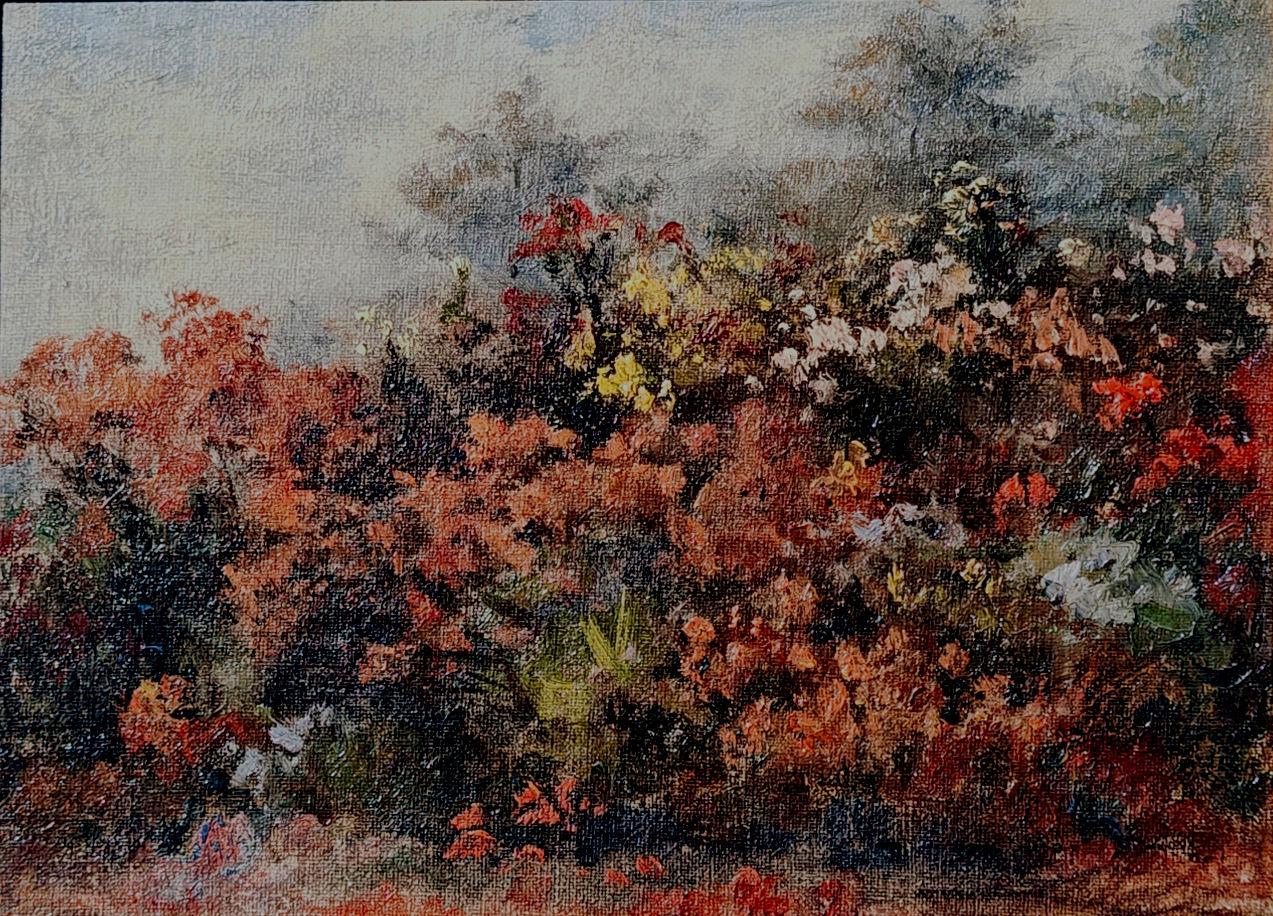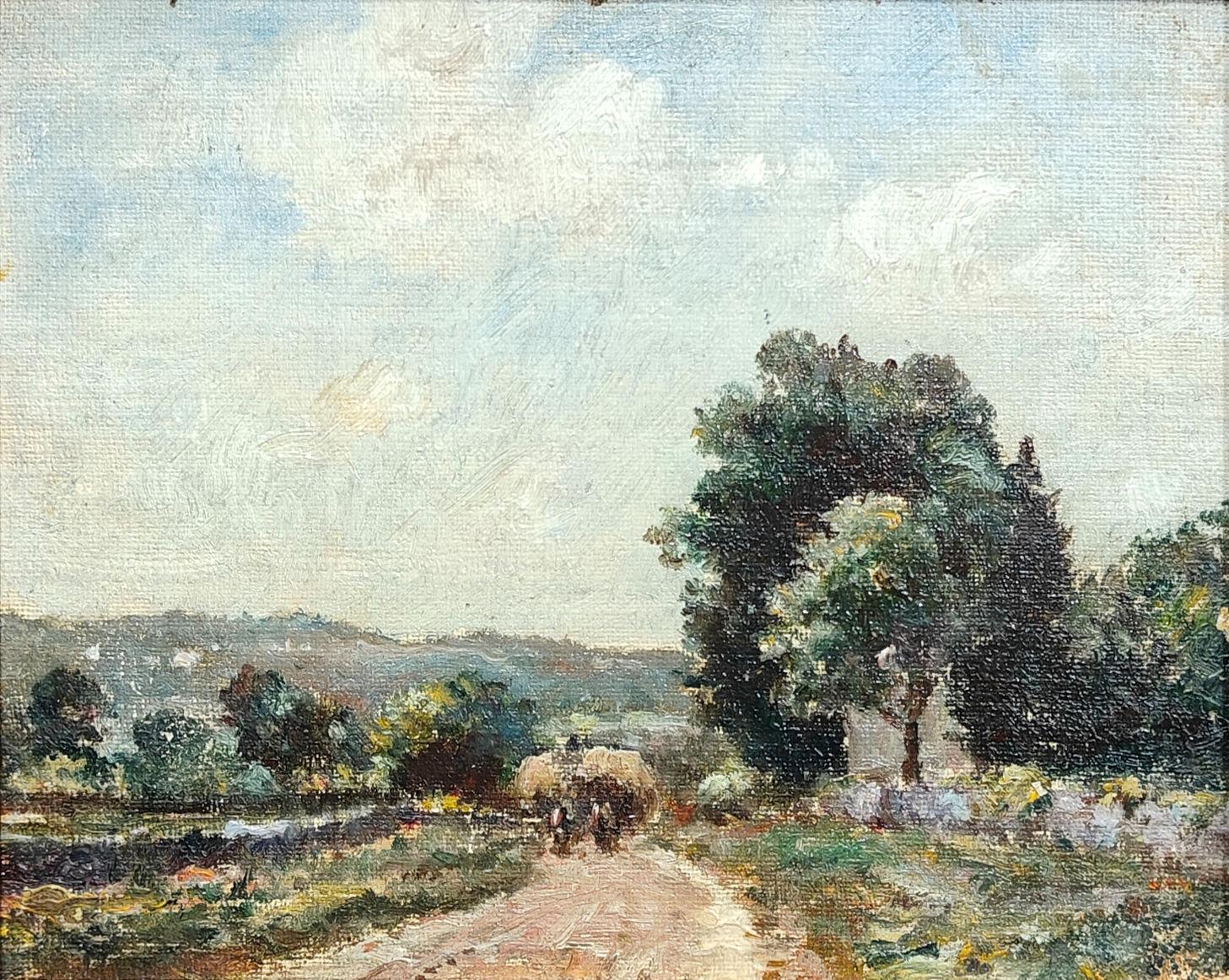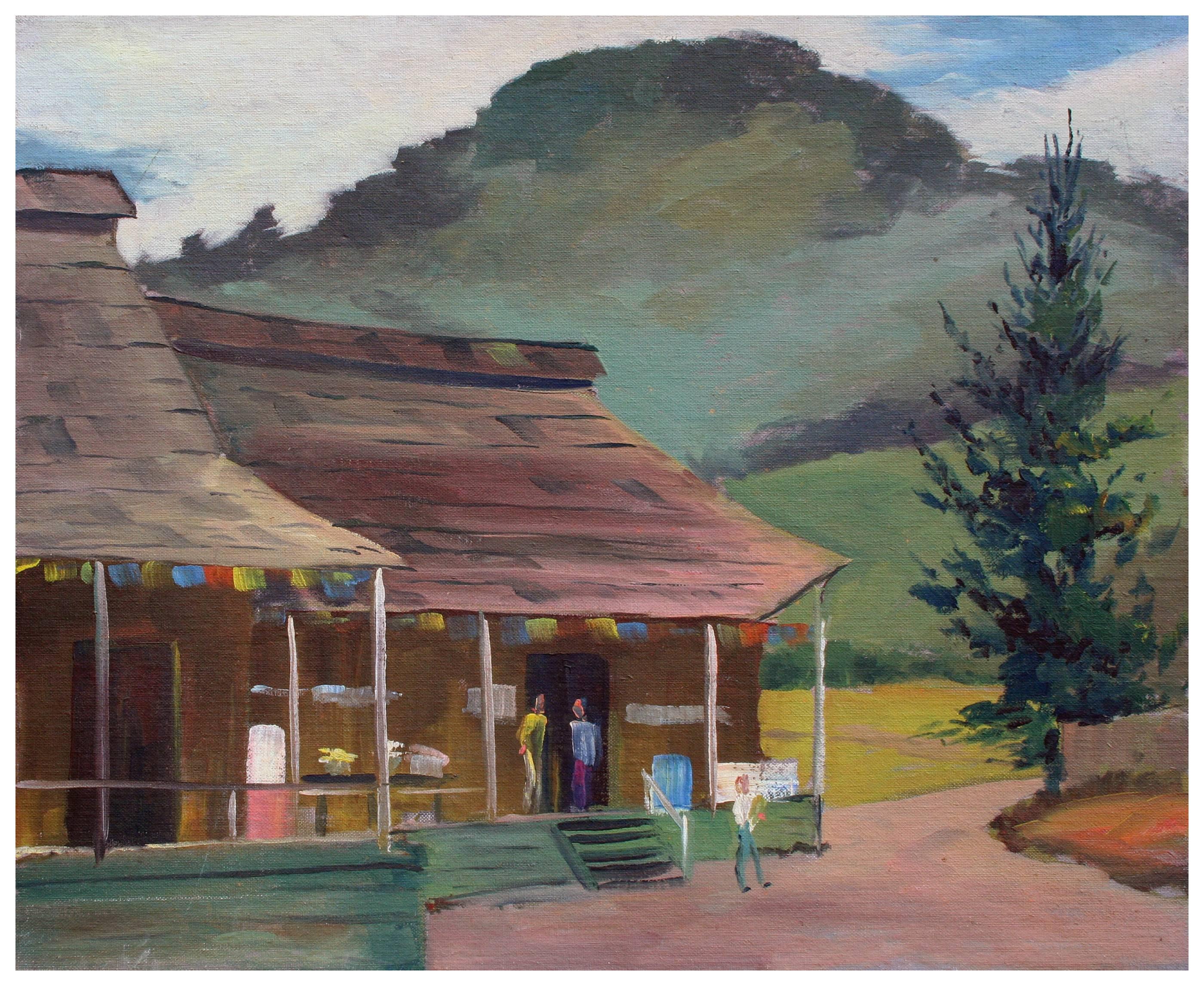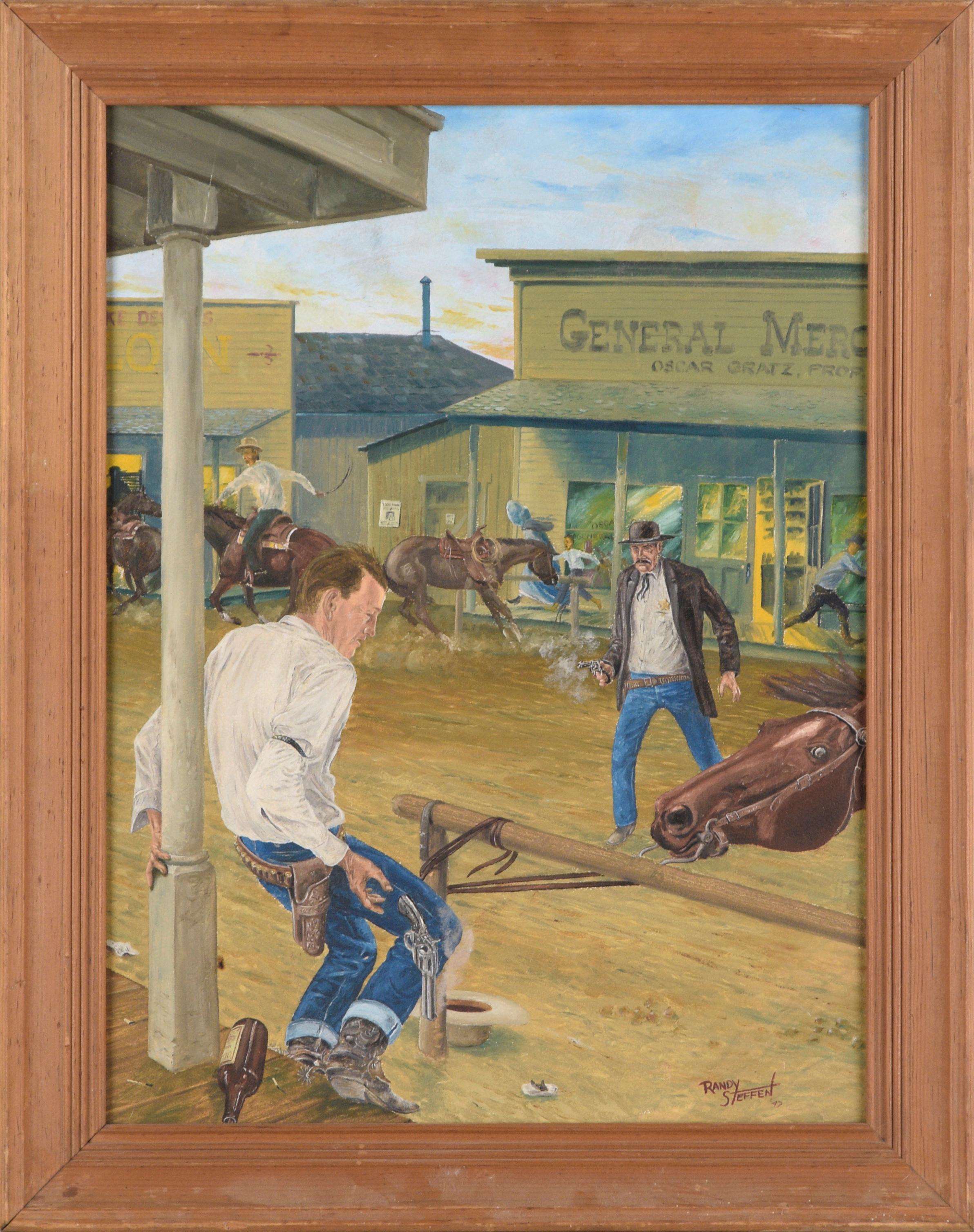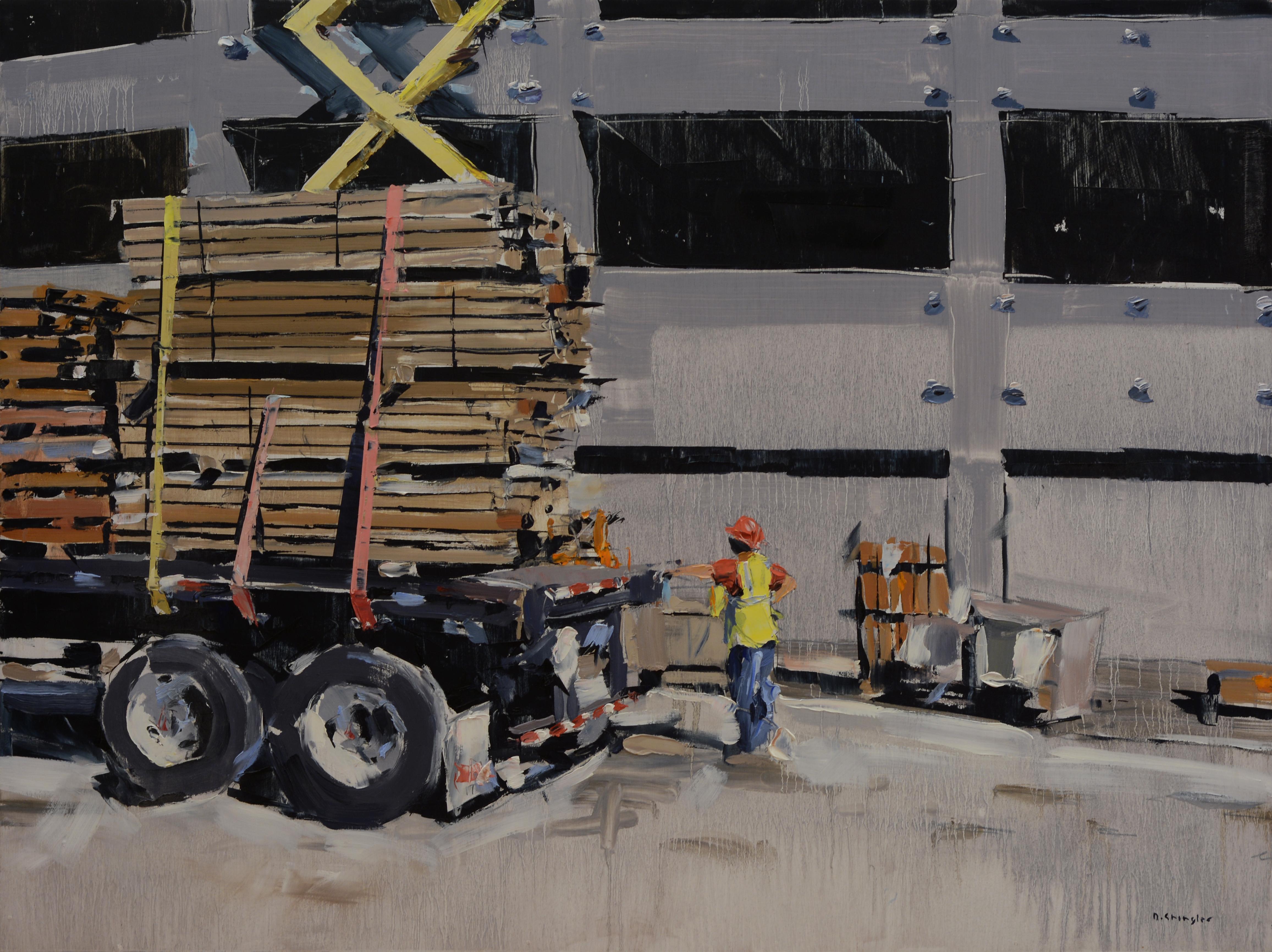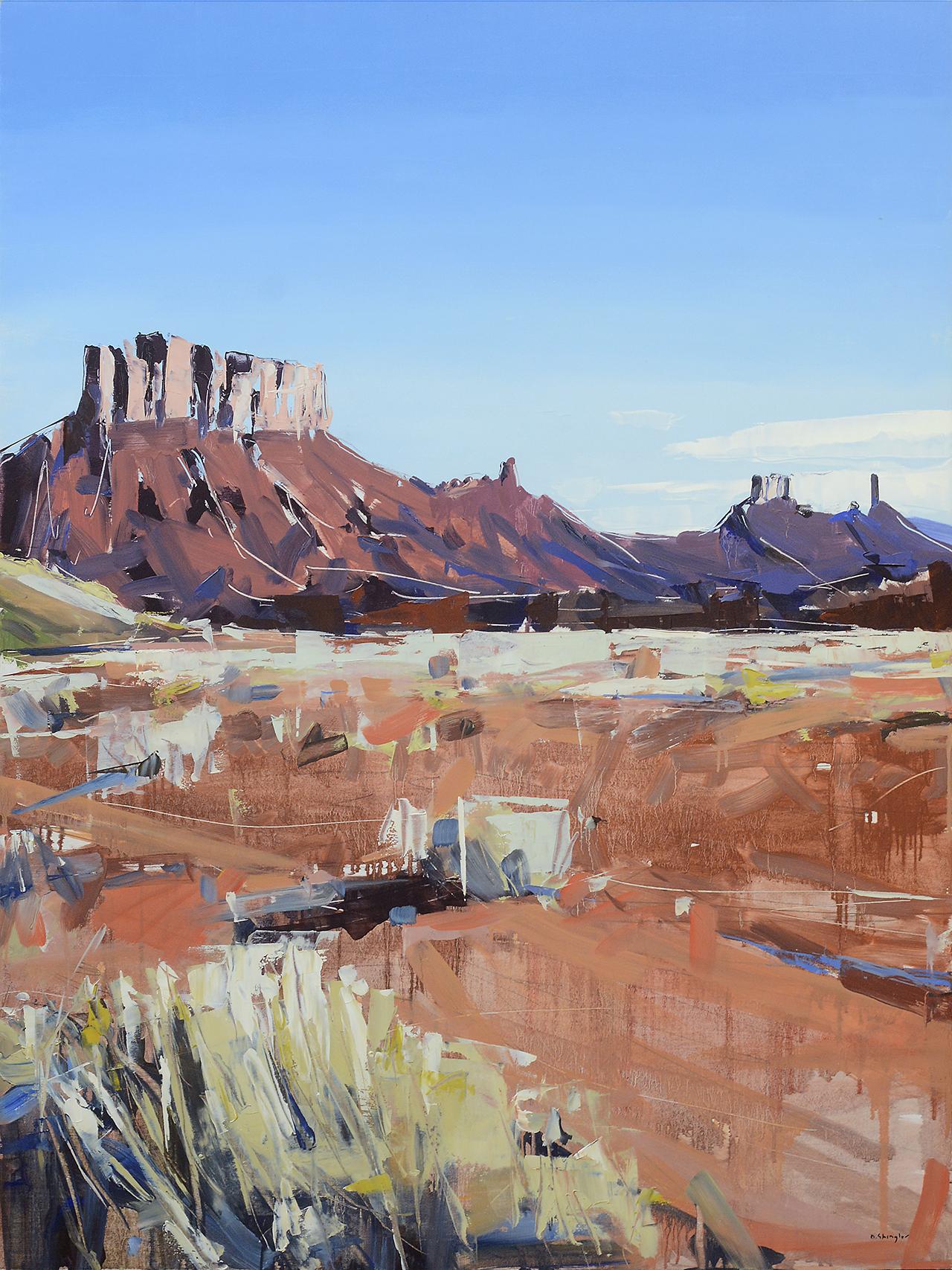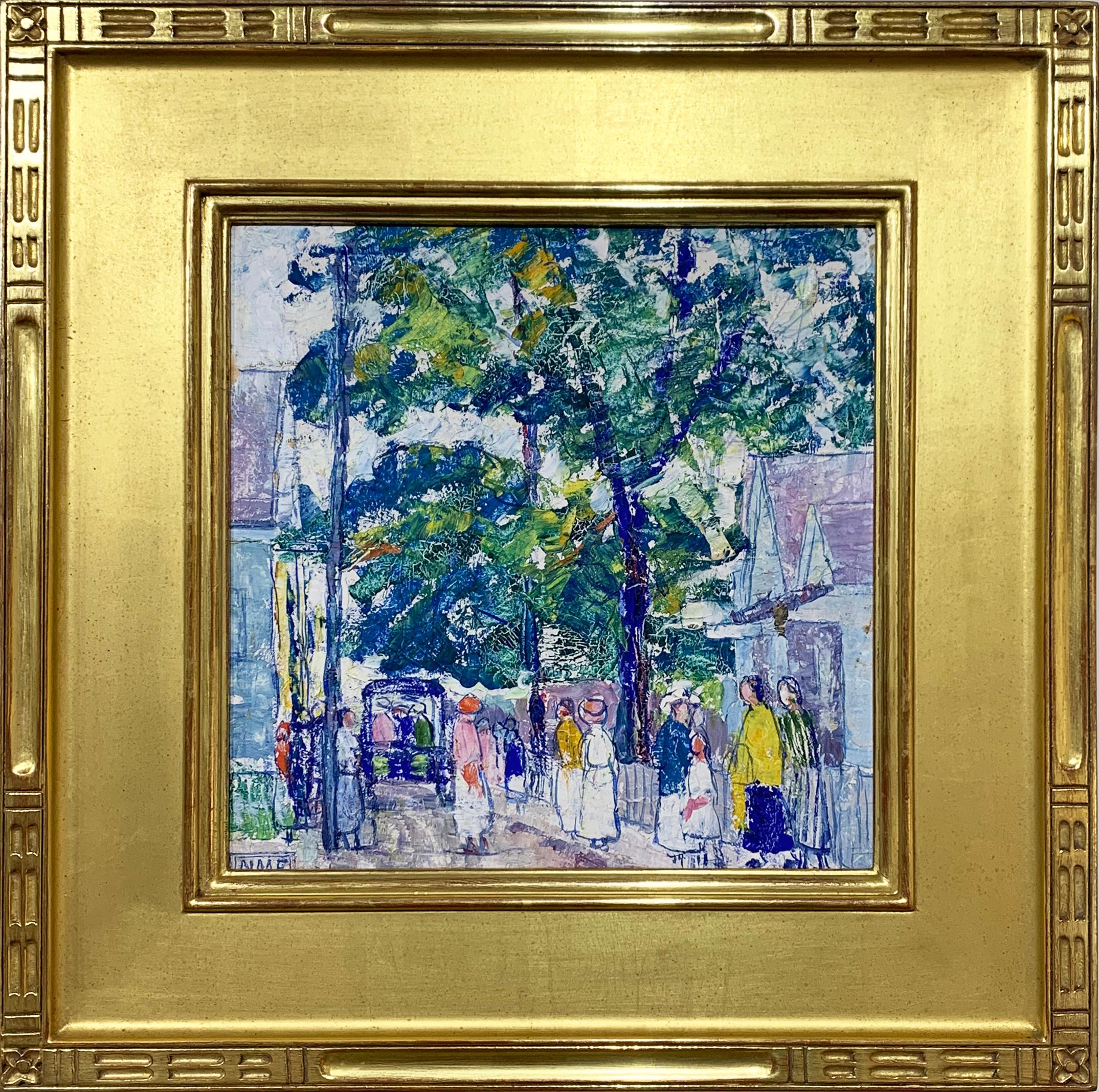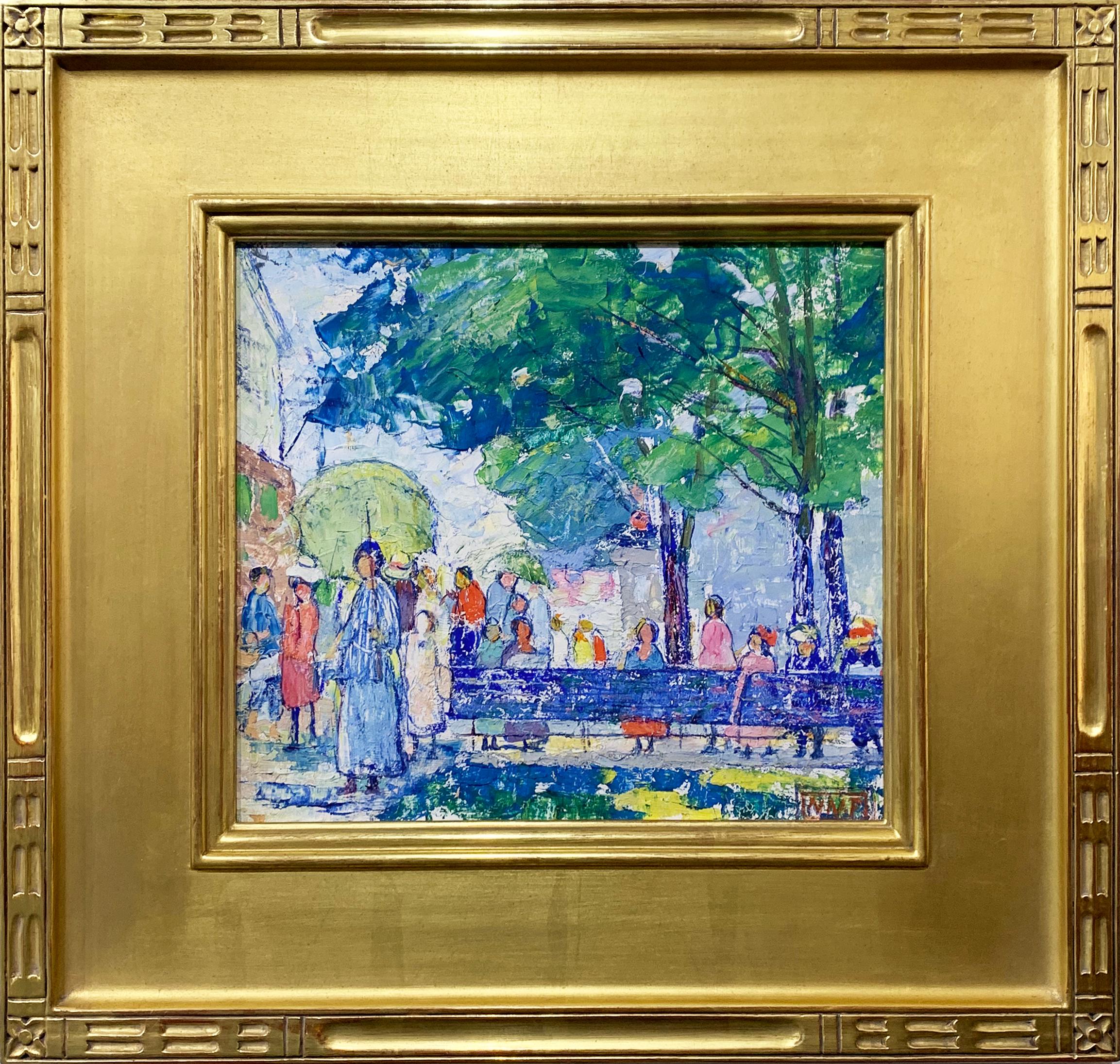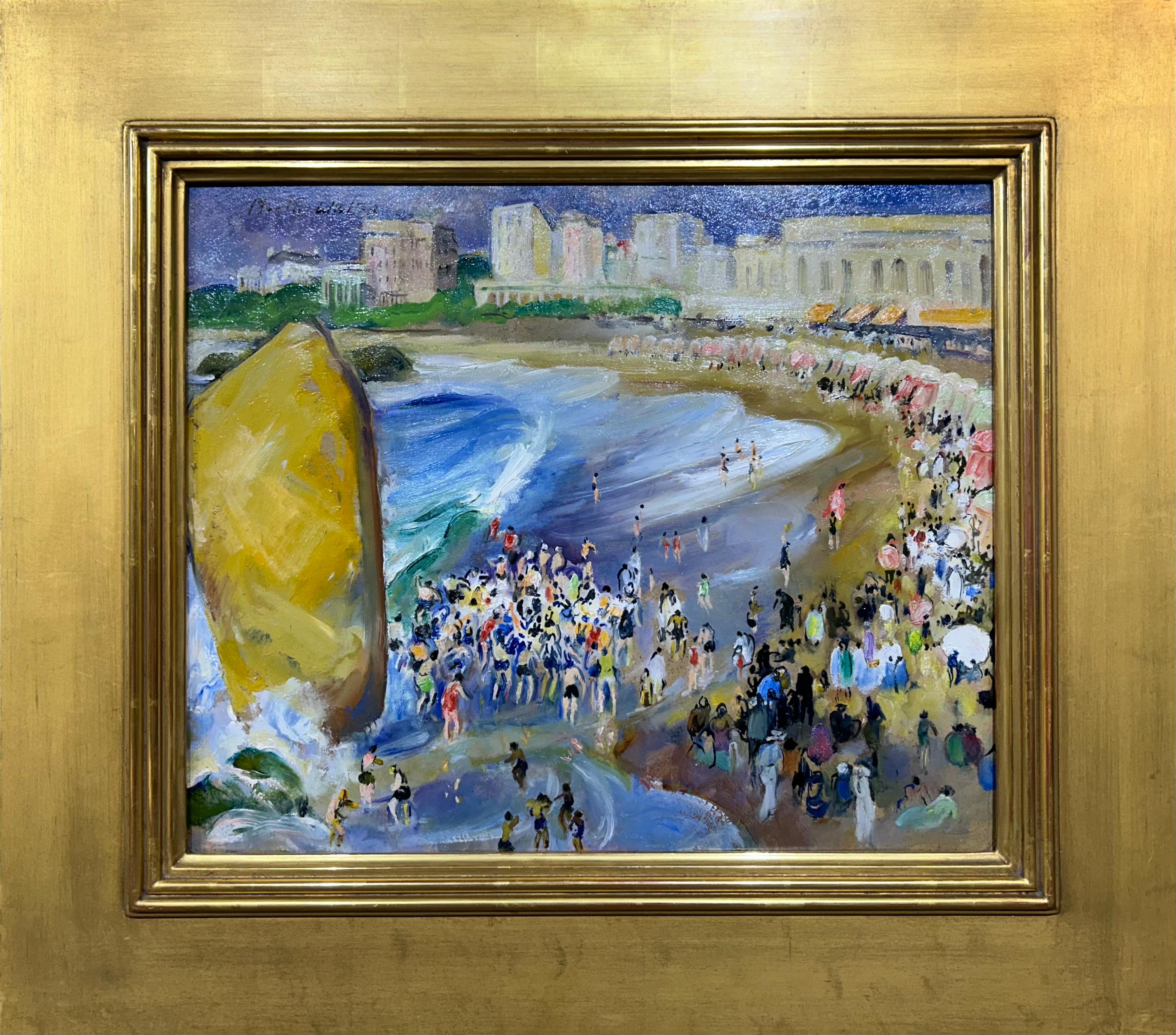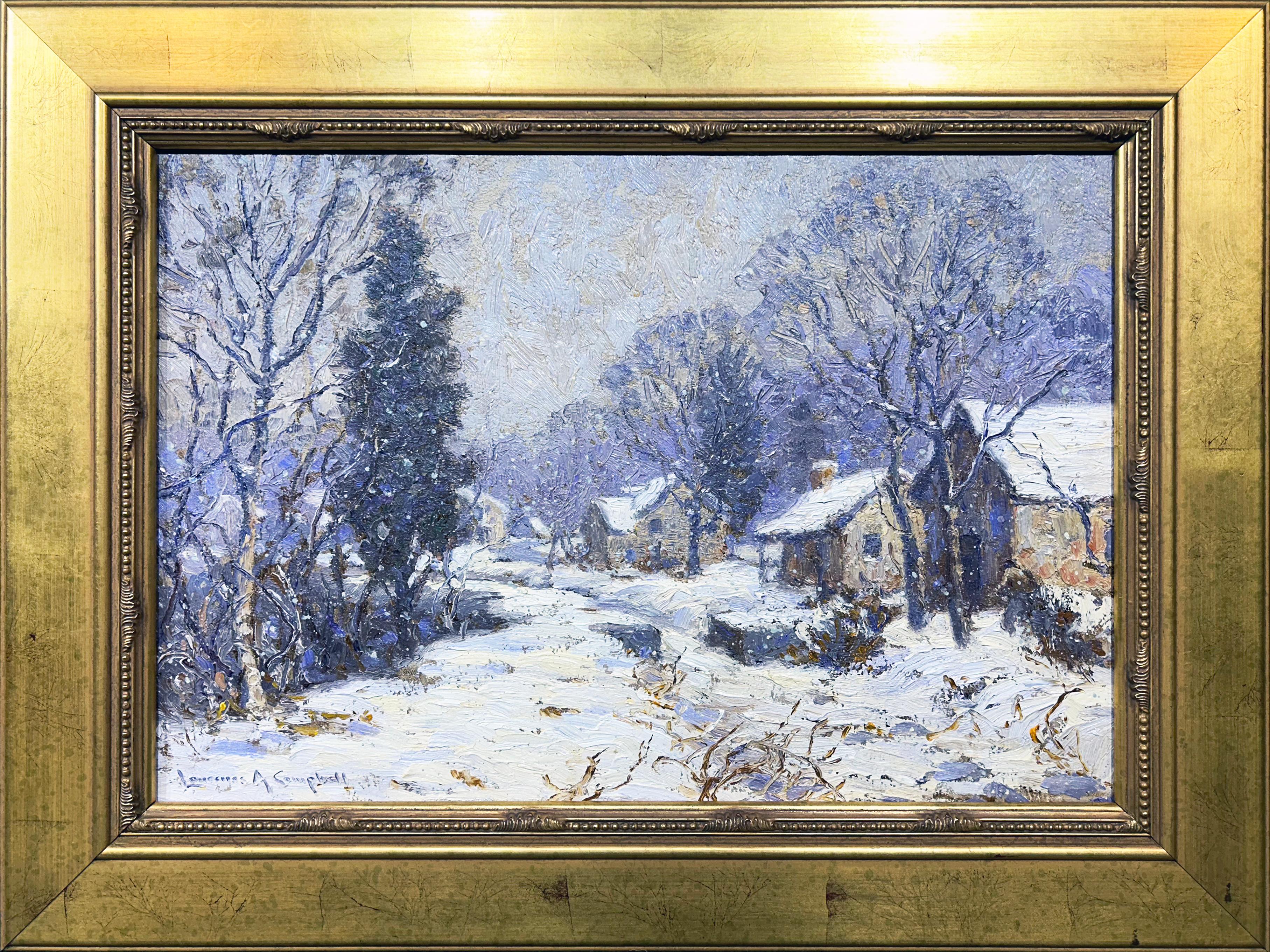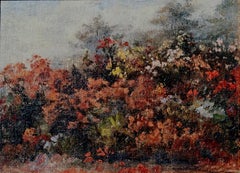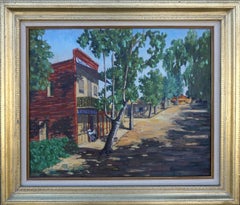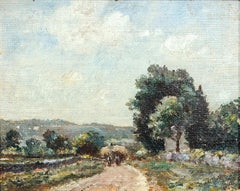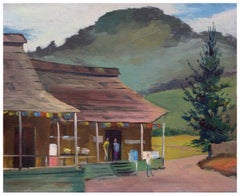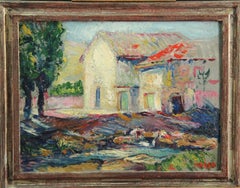
Frederick Harer, Washerwomen, Original Harer Frame, Oil on Board, ca. 1920's
1 of 7
Frederick HarerFrederick Harer, Washerwomen, Original Harer Frame, Oil on Board, ca. 1920'scirca 1920's
circa 1920's
$8,500List Price
About the Item
- Creator:Frederick Harer (1879 - 1949, American)
- Creation Year:circa 1920's
- Dimensions:Height: 14.75 in (37.47 cm)Width: 18.5 in (46.99 cm)
- Medium:
- Movement & Style:
- Period:
- Condition:The painting and frame are in very good and original condition. The painting has been cleaned and varnished.
- Gallery Location:Doylestown, PA
- Reference Number:1stDibs: LU106333526622
Authenticity Guarantee
In the unlikely event there’s an issue with an item’s authenticity, contact us within 1 year for a full refund. DetailsMoney-Back Guarantee
If your item is not as described, is damaged in transit, or does not arrive, contact us within 7 days for a full refund. Details24-Hour Cancellation
You have a 24-hour grace period in which to reconsider your purchase, with no questions asked.Vetted Professional Sellers
Our world-class sellers must adhere to strict standards for service and quality, maintaining the integrity of our listings.Price-Match Guarantee
If you find that a seller listed the same item for a lower price elsewhere, we’ll match it.Trusted Global Delivery
Our best-in-class carrier network provides specialized shipping options worldwide, including custom delivery.You May Also Like
"Color Sketch, Shakespeare Garden" Jennie Brownscombe, circa 1890 Impressionism
Located in New York, NY
Jennie Brownscombe
Color Sketch, Shakespeare Garden, c. 1890s
Signed lower left
Oil on board
7 1/8 x 9 1/4 inches
The artist was born in a log cab...
Category
1890s American Impressionist Figurative Paintings
Materials
Board, Oil
Wells Fargo Express, Gold Country -- Columbia, California
By Cecil F. Chamberlin
Located in Soquel, CA
Charming oil painting of the Wells Fargo Express Office building in the gold country town of Columbia State Historic Park in Columbia, California by Cecil ...
Category
1950s American Impressionist Landscape Paintings
Materials
Canvas, Oil, Illustration Board
"Brooklyn, New York" Frederick James Boston, Impressionist Brooklyn Landscape
By Frederick James Boston
Located in New York, NY
Frederick James Boston
Brooklyn, New York
Inscribed verso
Oil on board
7 1/2 x 9 1/2 inches
Though understudied today, Frederick James Boston was a well-known and respected teacher...
Category
Late 19th Century American Impressionist Figurative Paintings
Materials
Board, Oil
Mid Century Figurative Landscape -- Aptos Village Apple Shed and Market
By Jon Blanchette
Located in Soquel, CA
Charming mid century figurative landscape of Aptos Village Apple Shed and Market by listed California artist Jon Blanchette (American, 1908-1987). Aptos is just south of Santa Cruz,...
Category
1960s American Impressionist Landscape Paintings
Materials
Canvas, Oil, Cardboard
"Sundown" Western Shoot Out, Mid Century Figurative Action Scene
Located in Soquel, CA
A dramatic mid-century western figurative action scene depicting a shootout in an old western town by Randy Steffen (American, 1917-1977), 1947. Several ...
Category
1940s American Impressionist Figurative Paintings
Materials
Oil, Fiberboard
$1,200 Sale Price
20% Off
Marin County Meadows and Pond with Oak Trees by Manuel Valencia Tonalist Pioneer
Located in Soquel, CA
Marin County Meadows and Pond with Oak Trees by Manuel Valencia Tonalist Pioneer
A painter of California history and western landscapes, Manuel Valencia was born in Marin County, California in 1856 on the Rancho San Jose, the Valencia hacienda. The family received many land grants in the San Francisco area because of their ties to settlement history.
Image 8"H x 11.5"W
Frame, 14.5"H x 18.5"W x 2.75"D
The central focus of the painting is a cluster of lush, verdant trees, likely deciduous, situated near a calm body of water, possibly a pond or slow-moving creek. With a faint outline of figures emerging into the meadow below the towering trees. The foreground features a grassy area with hints of wildflowers or textured ground cover, leading the eye towards the water's edge. In the background, beyond the main cluster of trees, there appears to be a smaller, indistinct structure, possibly a house or shed, suggesting a subtle human presence in the otherwise natural scene. The overall composition is balanced and serene, typical of Tonalist works seeking to evoke a peaceful mood rather than dramatic narrative.
Color Palette and Light: The painting employs a subdued, Tonalist color palette, dominated by varying shades of greens, browns, and grays for the landscape elements, and a muted, possibly overcast or hazy sky in the upper portion of the canvas. The light source is diffused and soft, creating a gentle luminosity across the scene, particularly noticeable on the surface of the water which reflects the muted tones of the sky and surrounding foliage. This soft lighting emphasizes the atmospheric quality and quiet mood of the scene.
He was a descendant of General Gabriel Valencia, the first governor of the state of Sonora, Mexico under Spanish rule. He was named for his grandfather, who arrived in California in 1774 and became administrator of the Presidio in San Francisco.
As a Tonalist, Valencia primarily focused on variations in value and muted color palettes, often featuring greens, purples, blues, and grays. This emphasis on subtle shifts in tone, rather than sharp contrasts, allowed him to create smooth transitions between light and shadow, mimicking the soft, diffused light found in atmospheric conditions like mist, twilight, or moonlight.
Valencia studied with artists including Jules Tavernier in the San Francisco area, where he lived his entire life, and attended what is now Santa Clara University. He also spent some time in Mexico where he was a member of the Esquela de Bellas Artes de Mexico.
Early in his career, he was a commercial artist who designed calling cards. After the 1906 earthquake and fire, Valencia and his family moved to San Jose, but he commuted to his studio in San Francisco. There he was art editor of the "San Francisco Chronicle" newspaper under art patron M.H. de Young, for whom the museum in San Francisco is named. War Cry, the Salvation Army newspaper, also hired Valencia as its first illustrator.
During the time he did illustration work in San Francisco, he kept studios in Monterey and Santa Cruz, did landscapes in Tonalist styles including moonlit scenes that were similar to those of Charles Rollo Peters and indicated he had an awareness of the poetic aesthetic of James McNeill Whistler.
Around 1912, he began exhibiting in San Francisco galleries such as S & J Gumps and in New York at Macbeth Gallery and exclusive restaurants such as Delmonico's. President William McKinley, who purchased one of his Yosemite paintings...
Category
Early 1900s American Impressionist Landscape Paintings
Materials
Oil, Illustration Board
